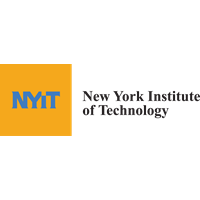Below is a summary of the abstract you submitted. Presenting author(s) is shown in bold.
If any changes need to be made, you can modify the abstract or change the authors.
You can also download a .docx version of this abstract.
If there are any problems, please email Dan at dar78@pitt.edu and he'll take care of them!
This abstract was last modified on March 15, 2022 at 6:21 p.m..

Bacteriophages are viruses that parasitize bacteria by infecting and reproducing inside them. They are the most abundant biological particles on earth, outnumbering bacteria 10:1. In Fall 2019 and 2021, students from the New York Institute of Technology adopted Arthrobacter globiformis, a soil-dwelling bacterium, as a host to isolate novel actinobacteriophages. Five of these phages, Janeemi, Uzumaki, Phives, Kaylissa and Eraser were characterized, sequenced, annotated. Janeemi, Phives, Eraser and Kaylissa belong to cluster AZ and are predicted to be temperate based upon the identification of a putative serine integrase gene that is conserved within the cluster. These AZ phages produce plaques that start out clear and gradually turn into a hazy bullseye over time. However, the plaques formed by Eraser are consistently larger and remain clearer longer than Janeemi, Phives, and Kaylissa. We successfully formed lysogens of these phages, but had a harder time forming a stable lysogen with Eraser. In an immunity assay, phage Eraser was able to form clearings on lysogens of Phives and Kaylissa. What genetic elements determine the plaquing behavior in cluster AZ phages on Arthrobacter globiformis? We have found that Janeemi, Phives, Kaylissa, Eraser and Uzumaki can all infect Arthrobacter globiformis B-2880, but only Uzumaki from cluster AU6 is cable of infecting Arthrobacter globiformis B-2979. We are trying to expand the host range of phage Eraser to infect Arthrobacter globiformis B-2979 in an effort to understand determinants of host range. We are also developing a plaquing assay to differentiate AZ phages that we will use to identify genetic regions of interest that may contribute to plaque characteristics. One candidate gene that may contribute to this behavior is the endolysin gene. In cluster AZ, there are three different phams for endolysin, which facilitates breakdown of the peptidoglycan cell wall. The repressor gene may also contribute to the variations in plaque morphology and lysogen stability, but so far, no repressor gene has been identified in cluster AZ phage genomes. Our studies will use experimental evidence to highlight genetic regions of interest that may contribute to the plaguing behavior differences we observe in cluster AZ phages.

